Description and characteristics of hydrangea Samara Lydia
| Content:
|
Samara Lydia is an exclusive variety in the variety of paniculate hydrangeas. Bred by the French nursery RENAULT and registered by the patent offices of France and Russia in 2018. The variety was named in memory of Lydia Viktorovna Sergeeva, an employee of the Vera Glukhova Garden Center. The most vibrant hydrangea in the world will be the icing on the cake in any garden. The showiness and colors of the plant will captivate the heart of any gardener.
Video review of paniculata hydrangea Samara Lydia:
This is interesting! The author is the French breeder Jean Reno, each variety of which is a creation, an art. In France, the hydrangea Samarskaya Lidiya was presented under a different name Framboisine - translated as raspberry.
Description of hydrangea Samara Lydia
The compact, medium-sized bush forms a dense, spherical crown. The dark red stem is densely covered with emerald leaves with reddish jagged edges. The surface of the leaf blade is rough with small spines.
The cascade of inflorescences is densely formed by several panicles. The inflorescence has two types of flowers: fertile - small fruiting flowers in the middle and sterile - large sterile flowers. In the last phase of flowering, they acquire a burgundy-wine color and a sweet aroma.
Features of the Samara Lydia variety
Paniculata hydrangea Samara Lydia has several distinctive features unique to it; it is impossible to confuse this beauty with other varieties.
- When blooming white, a crimson bead forms in the center of the flower.
- Dark emerald foliage that turns cherry in late autumn.
- The red-violet hue of the shoot gradually becomes dark brown.
- With the onset of autumn, the inflorescence does not wither or turn brown, but only gains in intensity of crimson shades.
- The leaves of Samara Lydia remain on the stems until frost, maintaining their ruby color.
This is interesting! The presentation, held in 2018 in Samara, was attended by the ambassadors of Russia and France, as well as Eric Renault and many eminent people.
|
The crimson bead in the center of the flower is a distinctive feature of the variety |
Planting a seedling
Hydrangea will show itself in all its glory when planted in acidic soil in a place where there is enough sunlight.In the south they are placed in partial shade, in the middle zone they are protected only from the midday sun, in the northern regions the planting site should be well lit.
Important! With a lack of sunlight, the panicles of Samara Lydia color more slowly, the color becomes less bright and weakly saturated.
The timing of planting hydrangeas depends on the region of growth. In the south, this is the beginning or middle of autumn; in the middle zone, it can be planted from spring to the end of summer; in regions with a harsh climate, planting is carried out only in the spring, so that the seedling has time to get stronger before the early frosts.
- The pre-dug hole is filled with soil mixture. If the soil on the site is not suitable, prepare it yourself by mixing:
- 2 parts rotted humus;
- 2 parts acid peat;
- 1 part fine-grained sand;
- superphosphate, potassium sulfate – 50, 40 g. respectively.
- The size of the planting hole should be 3 times the size of the root system of the seedling.
- The hole is filled with prepared substrate and filled with water. You can add a teaspoon of citric acid to a bucket of water.
- After the liquid has been absorbed, a bush is placed in the center so that the root collar is at ground level, the soil is added and carefully compacted.
- An earthen roller is formed around the pit, watered at the rate of 2 buckets per plant, the soil is mulched with pine needles, bark, and sawdust.
- The first days after planting protect from open sun.
|
Transplanting a purchased paniculate hydrangea seedling into a pot |
Don't forget to read:
Recommendations for planting and caring for paniculate hydrangeas ⇒
Important! Hydrangea is planted next to large trees; their openwork crown will shade the seedling during the bright midday sun.
Aftercare
During the first few years, the seedling begins to mature.With age, the plant will get stronger and, with several mandatory techniques during planting and care, will build up a powerful base.
For hydrangeas, it is important to provide abundant watering without allowing stagnation of water. 2 buckets of water are poured under an adult bush at a time. In rainy weather, watering is reduced.
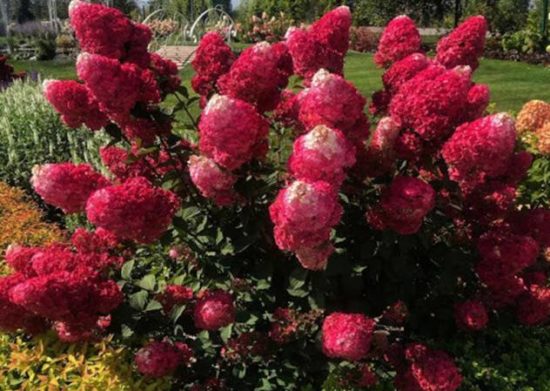 During the flowering period, the bush in the area “burns with fire” During the flowering period, the bush in the area “burns with fire” |
Samara Lydia blooms long and profusely; it needs good nutrition. In early spring, hydrangea is fed with nitrogen for active growth. During the period of budding and flowering, they are treated to potassium, superphosphate, and urea. In the fall, the plant is prepared for winter, continuing to give phosphorus-potassium fertilizers, completely eliminating nitrogen ones.
The variety tolerates short pruning well. It is carried out in early spring, before sap flow begins. The shoots are shortened, leaving 2-3 buds on each. The cuts must be covered with garden varnish. In autumn, pruning is not carried out; it is enough to remove faded panicles.
Important! When pruned correctly, the bush is harmonious, elastic shoots hold large heads of flowers without falling apart.
Do not miss:
Reviews of hydrangea Samara Lydia
The variety is quite new, but has already managed to show its positive qualities, judging by the reviews of the owners:
“Yes, girls, it’s me on the Gardener’s Bulletin, I showed my new product for this year, paniculate hydrangea Samara Lydia, I’m very pleased with it!”
“But my heart belongs to one - this is the Samara Lydia variety. Between ourselves we affectionately call this hydrangea Lidochka), so everyone liked it. Favorite. I hope that every year she will become more mature and more beautiful. In the nursery itself, the adult specimens are simply beautiful. This variety can be distinguished at a glance. It immediately catches your eye.”
Using hydrangea in landscape design
The characteristic ruby color of the inflorescences makes Samara Lydia the queen of the garden.
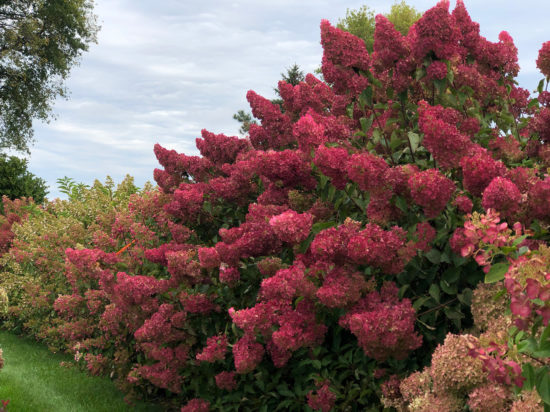 |
During flowering, the entire hydrangea bush “burns” like a torch, becoming the most noticeable highlight of the site.
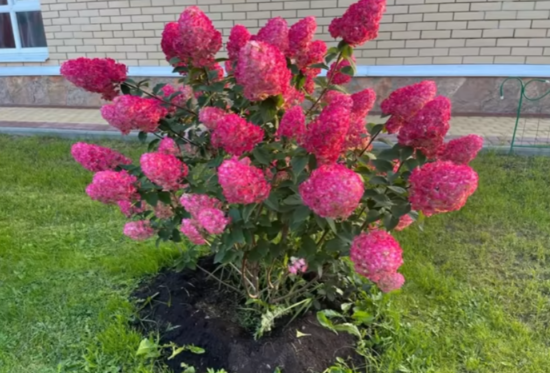 |
This variety of hydrangeas looks great in flower beds, as foreground plants for large tree groups. It is often planted as a single focal plant.
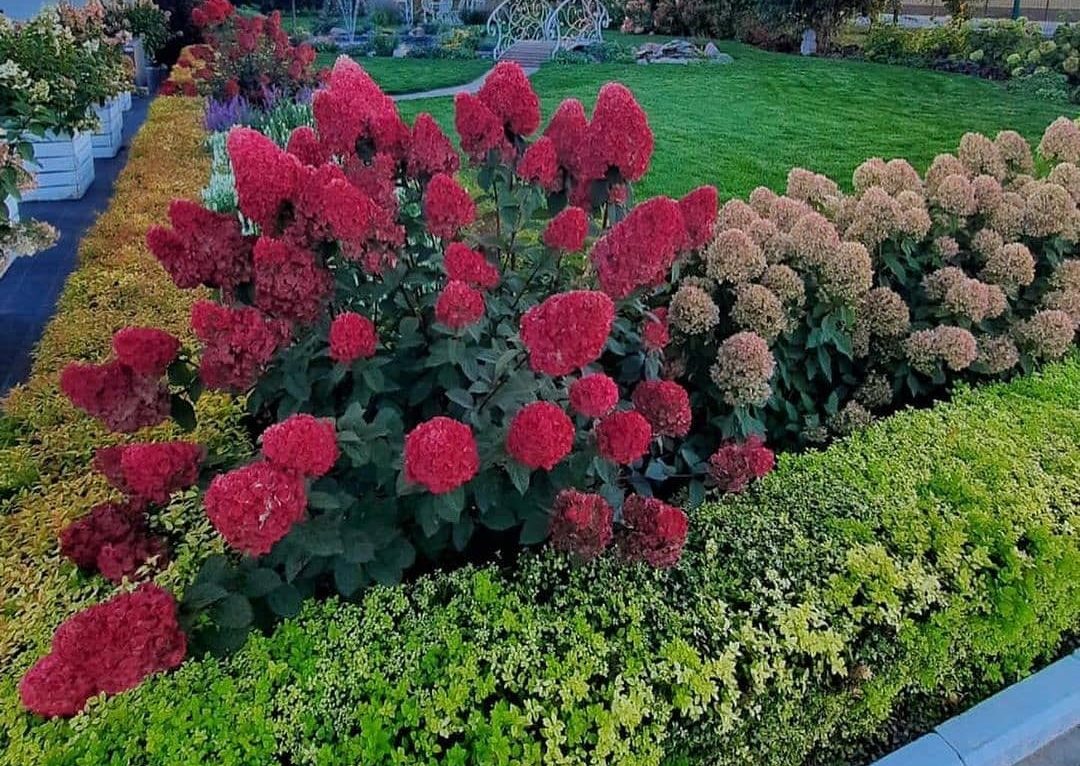 |
Samara Lydia is often grown in a container. In this case, the flower will decorate the terrace, loggia, balcony, or front entrance to the house. It can also be moved at will to any location on the site.
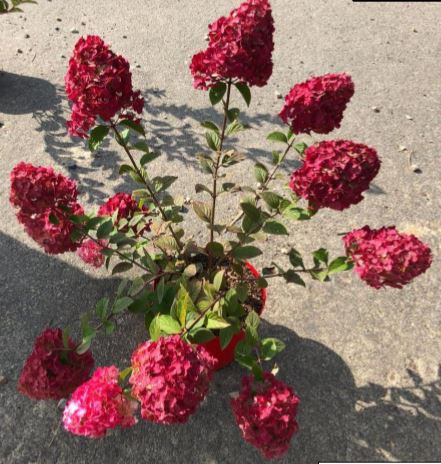 |
Similar articles:
- Hydrangea Sunday Fries: description, photos and reviews ⇒
- Paniculata hydrangea “Silver dollar”: description, photos and reviews from gardeners ⇒
- Hydrangea paniculata Skyfall with description, photos and reviews ⇒
- Description of hydrangea Strawberry Blossom with photos and reviews from gardeners ⇒
- Hydrangea paniculata Polistar: description, photos and reviews ⇒
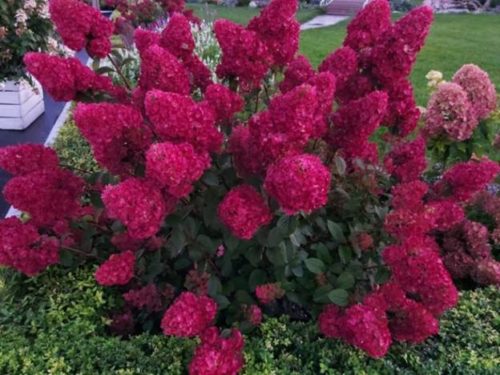
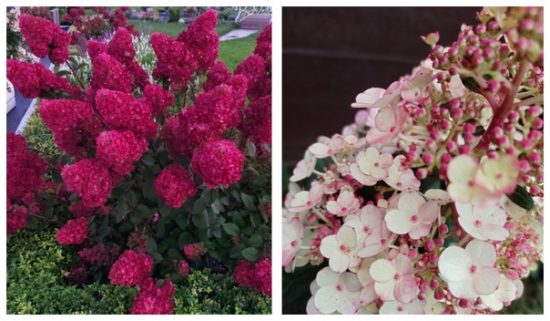
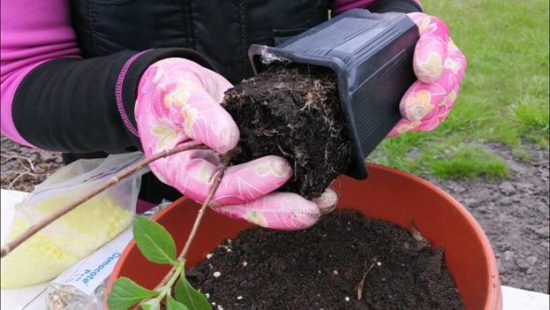

 (1 ratings, average: 4,00 out of 5)
(1 ratings, average: 4,00 out of 5) CUCUMBERS NEVER GET SICK, I'VE BEEN USING ONLY THIS FOR 40 YEARS! I SHARE A SECRET WITH YOU, CUCUMBERS ARE LIKE THE PICTURE!
CUCUMBERS NEVER GET SICK, I'VE BEEN USING ONLY THIS FOR 40 YEARS! I SHARE A SECRET WITH YOU, CUCUMBERS ARE LIKE THE PICTURE! You can dig a bucket of potatoes from each bush. Do you think these are fairy tales? Watch the video
You can dig a bucket of potatoes from each bush. Do you think these are fairy tales? Watch the video
 How our fellow gardeners work in Korea. There is a lot to learn and just fun to watch.
How our fellow gardeners work in Korea. There is a lot to learn and just fun to watch. Eye trainer. The author claims that with daily viewing, vision is restored. They don't charge money for views.
Eye trainer. The author claims that with daily viewing, vision is restored. They don't charge money for views. A 3-ingredient cake recipe in 30 minutes is better than Napoleon. Simple and very tasty.
A 3-ingredient cake recipe in 30 minutes is better than Napoleon. Simple and very tasty. Therapeutic exercises for cervical osteochondrosis. A complete set of exercises.
Therapeutic exercises for cervical osteochondrosis. A complete set of exercises. Which indoor plants match your zodiac sign?
Which indoor plants match your zodiac sign? What about them? Excursion to German dachas.
What about them? Excursion to German dachas.